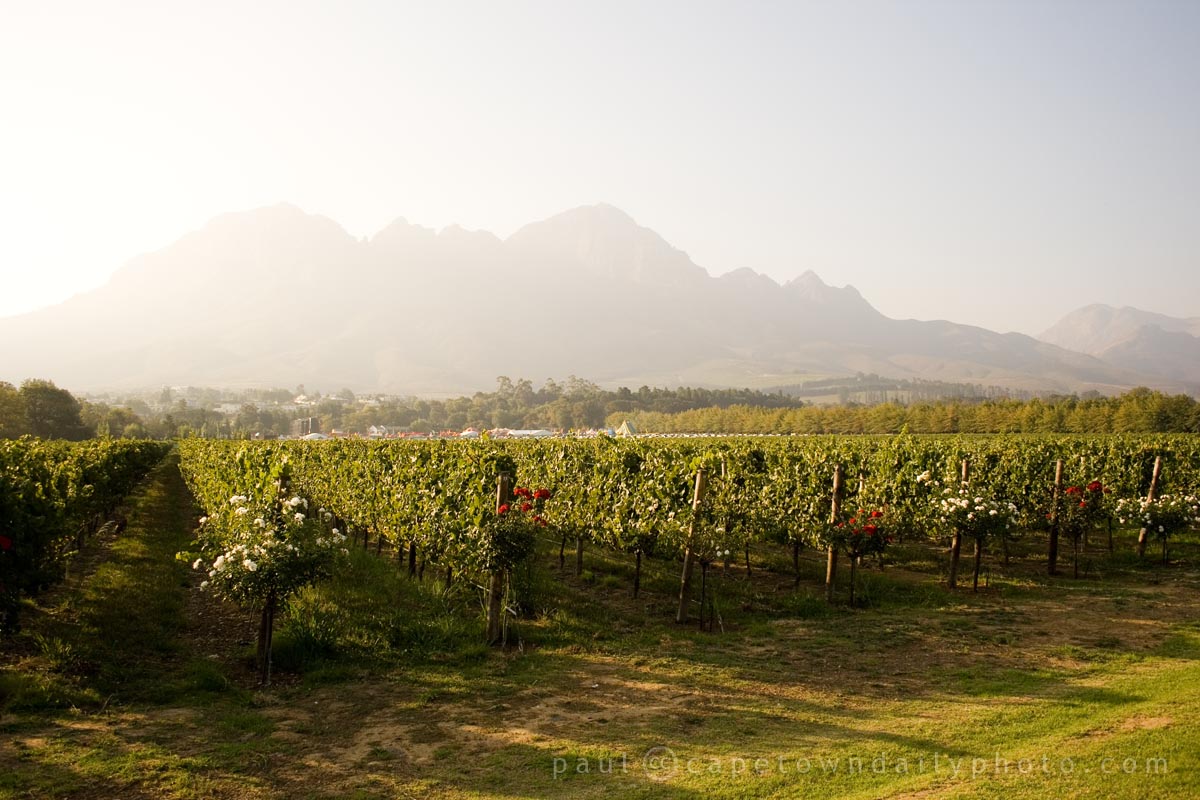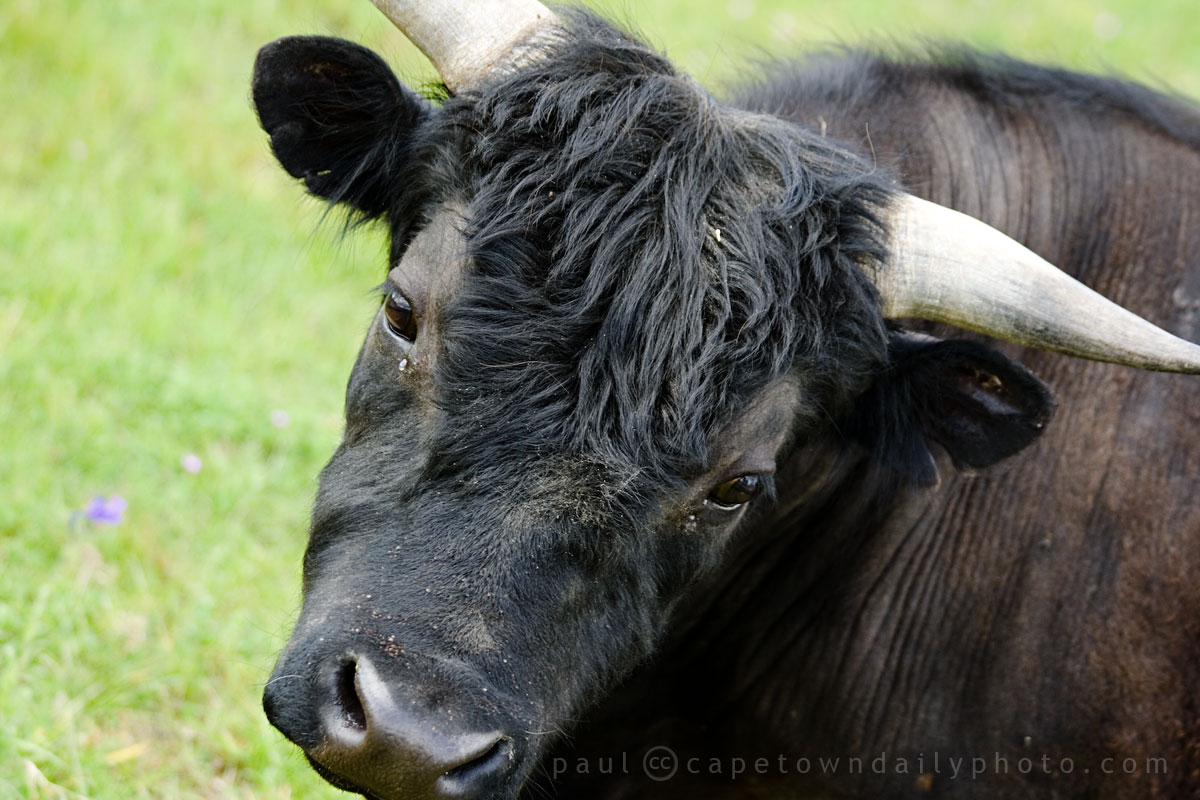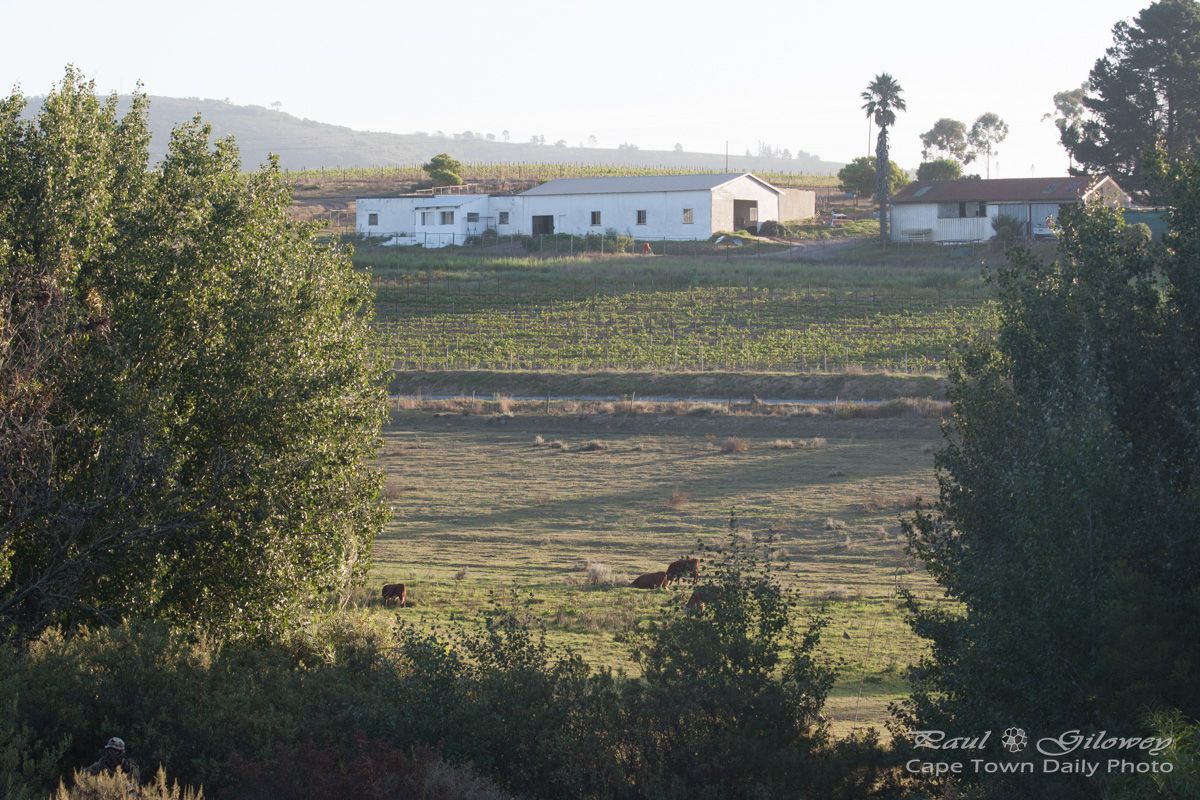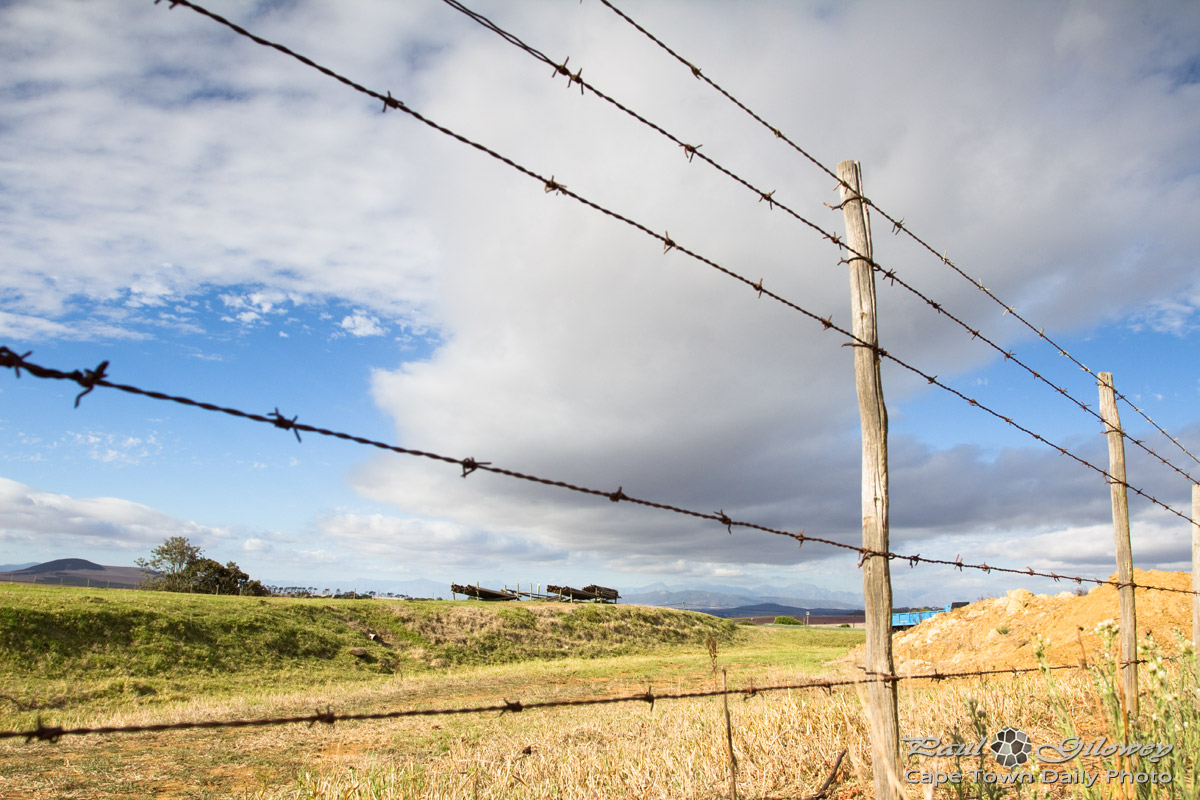Tag Archives: farmlands
Barbed wire fences
Barren fields and wild game

If I recall correctly, I spotted a number of buck (perhaps springbok), as well as two or three ostriches scouring the field for bits and pieces to nibble on. I'm not sure, but I think this field belongs to Clara Anna Fontein, a private game reserve just outside of Durbanville.
I've actually never visited the reserve, but if you're in Cape Town and don't have time to visit our country's larger reserves, then consider doing a game drive at Clara Anna Fontein. I don't believe they have any of the big game, well, unless you consider blue wildebeest big game - but they do have zebra, springbok, ostrich, bontebok, eland and a variety of other wildlife roaming their small part of the Renosterveld.
Golden-orange vineyards

Seriously-speaking though, walking about on farmlands dirt roads in dry windy weather leaves one covered in an uncomfortable grimy-feeling layer of fine orange powder mixed with perspiration. Autumn's cool ~21°C weather is far, far, more desirable - and besides, the skies are bluer and filled with billowing clouds, and the farmlands are a beautiful mix of green and orange.
Lourensford Wine Estate

Lourensford Wine Estate is a large estate in Somerset West that can trace its history back to the year 1700. We spent some time here watching Prime Circle rock the crowds at the estate's open-air venue. It's a beautiful spot to visit for lunch, so if you'd like lunch on a wine estate, consider heading to Lourensford (map).
Lettuce farming

This is the second last photo from our series about Joostenbergvlakte, and a photo that I'd considered using for yesterday's theme day, titled "Contrast".
If you're used to living in a large city then this kind of scene probably seems quite unusual. What's cool about Cape Town is that farms and smallholdings like this one aren't too far from the city centre, which means that within half an hour you can move from the inner city, through leafy suburbia, to wide-open farms.
What I found interesting about this little field is that the farmer has planted green lettuce in between his two rows of red lettuce. It doesn't seem particularly practical - I mean, surely all the red lettuce will be harvested together? All I can think is that he has a bit of an artistic eye, and likes to keep his fields pretty. :)
A bit of bull

We took an afternoon drive out the back of a slightly-away-from-civilisation suburb called Joostenbergvlakte, so in the next few days we'll bring you a few gems that we discovered in the area.
Joostenbergvlakte (pronounced something like "Yooah-sten-berg-fluck-tuh") is a suburb of smallholdings, inhabited by people who like to farm on a small scale, or who need a lot of space for their horses or some kind of business. People sometimes even buy these smallholdings simply because they like a LOT of space around them, as opposed to the relatively little space that suburbs closer to the city afford their residents.
Some people love it and dream of owning a tiny farm, but not I - and even more so not Kerry-Anne. :)
Wheat production statistics

According to Grain SA, South Africa consumes about 3 million tons of wheat each year - 2 million grown locally and the other million imported. Isn't it weird to think that this huge field doesn't even scratch the surface of all the wheat that we consume?
An interesting fact I picked up is that since the beginning of the year the price of wheat has fallen from around 2,600 ZAR per ton to about 2,150 ZAR per ton, which I guess (though I'm no economist) indicates slightly less demand than supply.
Perhaps South Africa is trying to lose weight. "Eat less starch, eat less starch!" ;)

